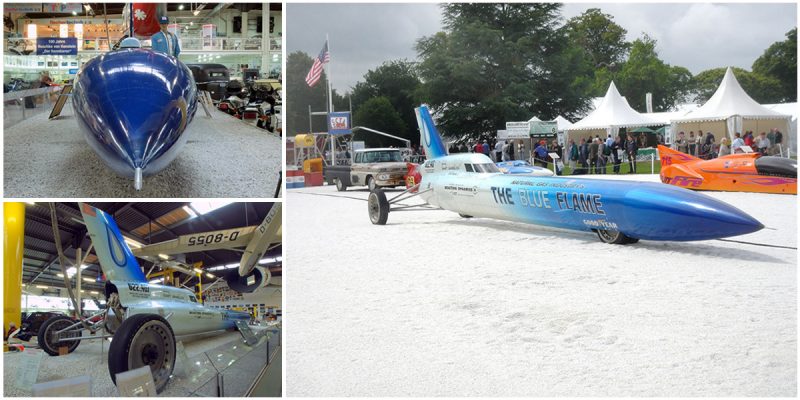One of the greatest sensations at the Museum Sinsheim is the “The Blue Flame,“ a rocket-powered vehicle that achieved the world land speed record on Bonneville Salt Flats in Utah on October 23rd, 1970.
The Blue Flame was constructed in Milwaukee, Wisconsin by Reaction Dynamics, a company formed by three men with a passion for speed: Pete Farnsworth, Ray Dausman, and Dick Keller.
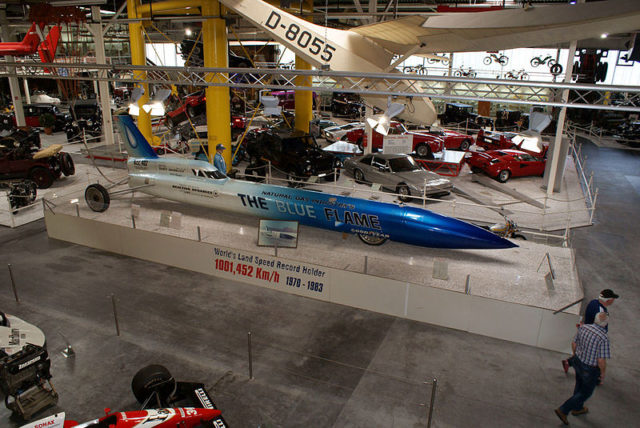
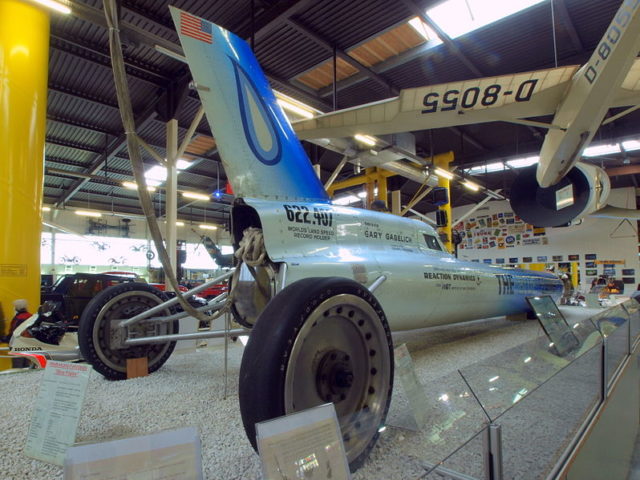
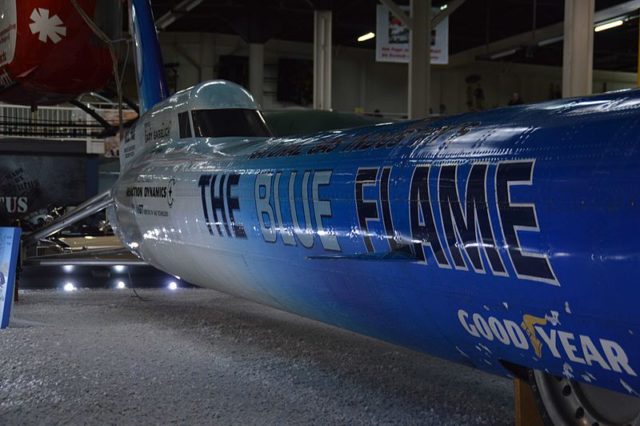
The 38-foot, 6,500-pound Blue Flame was powered by a rocket motor that combined liquefied natural gas and highly purified hydrogen peroxide.
On October 7th, 1970, the American motorsport driver Gary Gabelich blew away the existing land speed record (LSR) set in 1965 by 30 mph and set a fantastic new world record with this hybrid between car and rocket, when he reached an average speed of 1.014,656 km/h on the Bonneville salt flats.
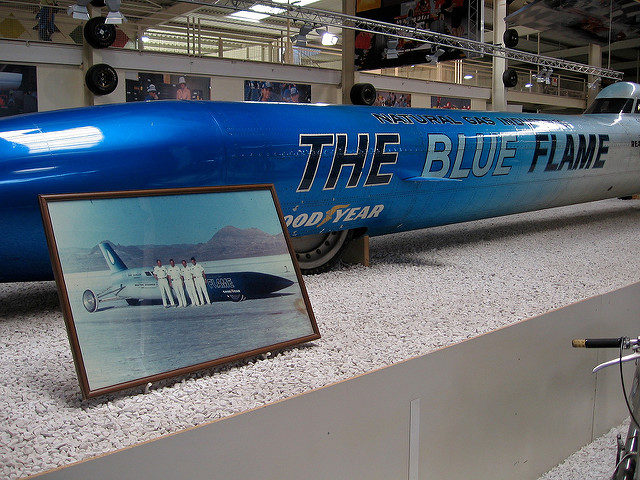
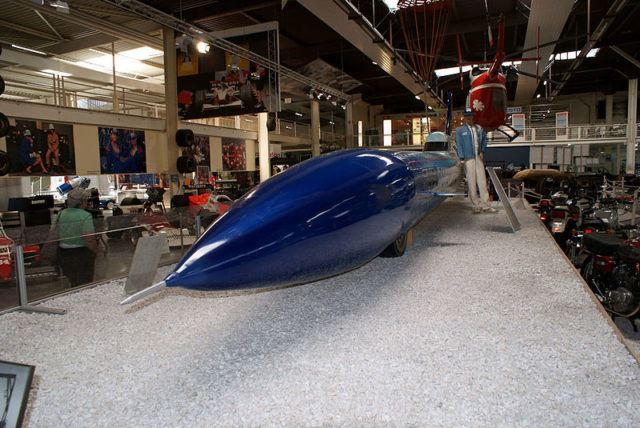
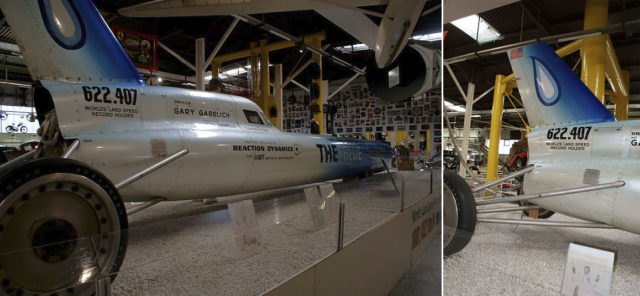
The FIA rules dictate that a land speed mark is recognized only after two runs (both runs must be made within one hour) through the FIA measured kilometer and mile courses.
The two corresponding speeds are then averaged for the official time and speed. Gabelich averaged 629.412 mph (1,013 km/h) on his first run and 631.367 mph (1,016 km/h) on his second run for an average speed of 630.388 mph (1,015 km/h) establishing a new kilometer FIA LSR.
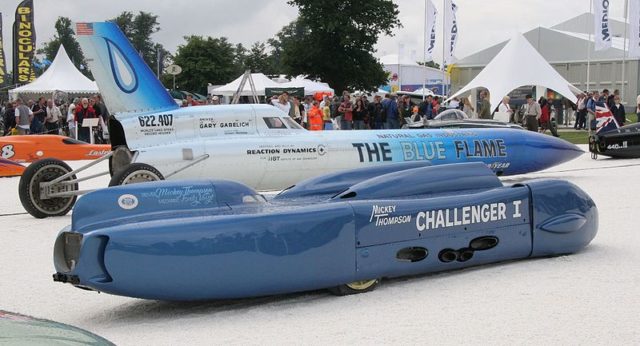
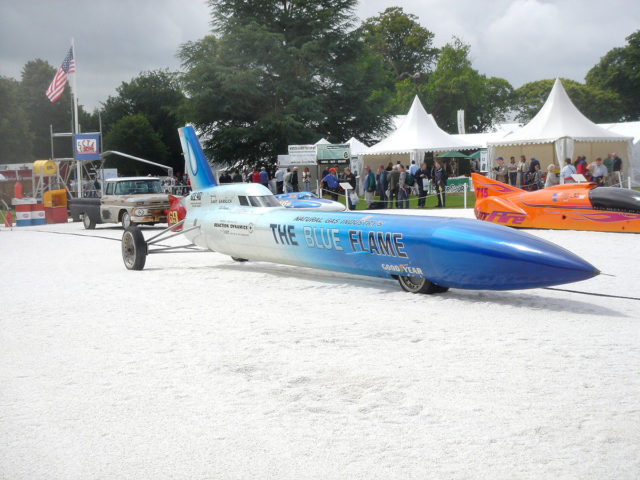
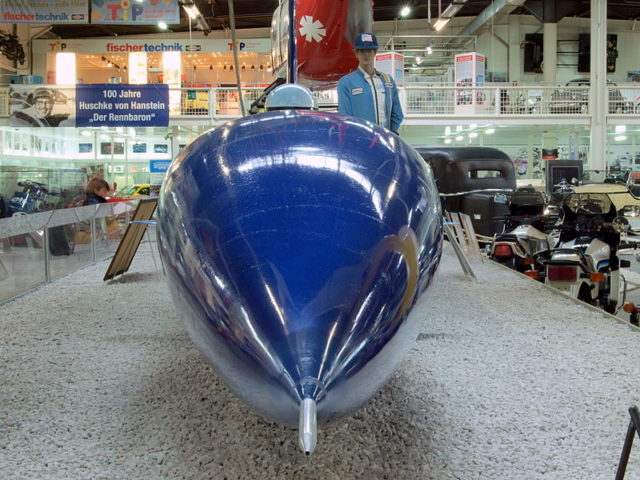
The kilometer record of 630.388 mph (1,014.511 km/h) stood until the jet-propelled ThrustSSC (or Thrust supersonic car) went supersonic in 1997, raising it to 760.343 mph (1,223.653 km/h) and became the first land vehicle to break the sound barrier officially.
The Blue Flame is now on permanent exhibition at the Auto and Technik Museum Sinsheim in Germany.
